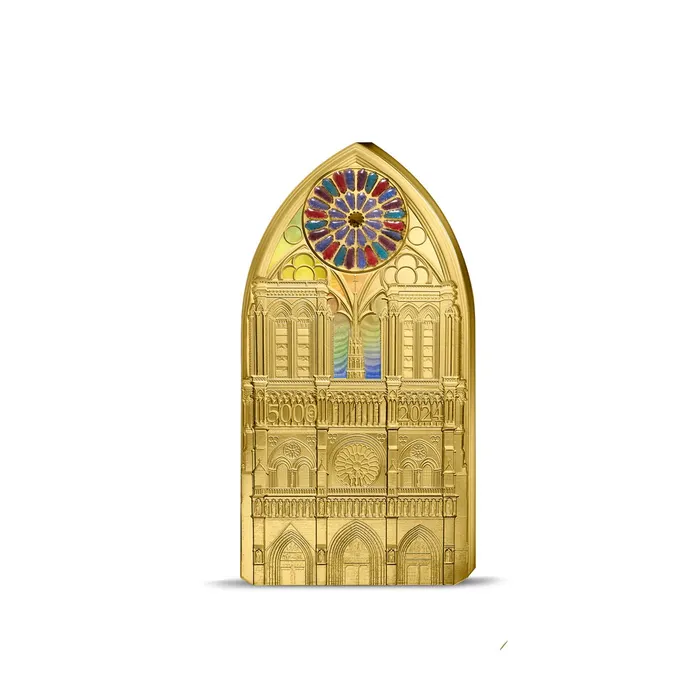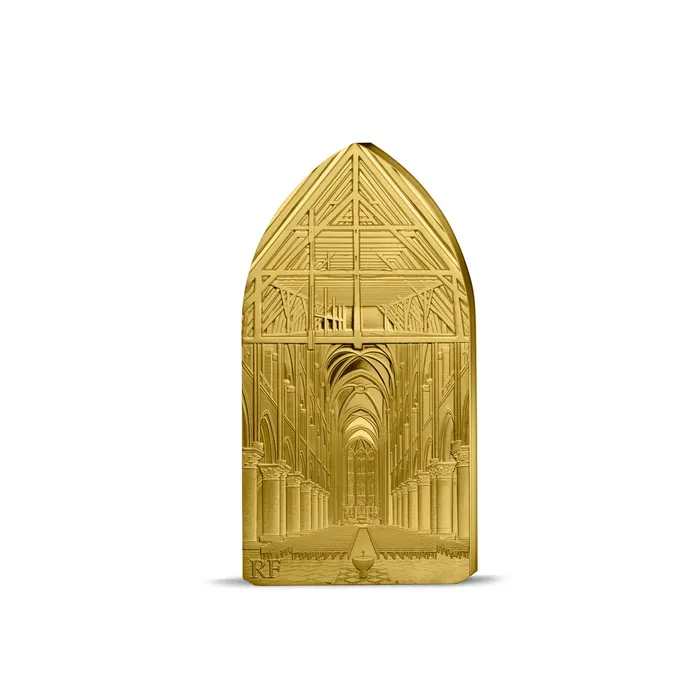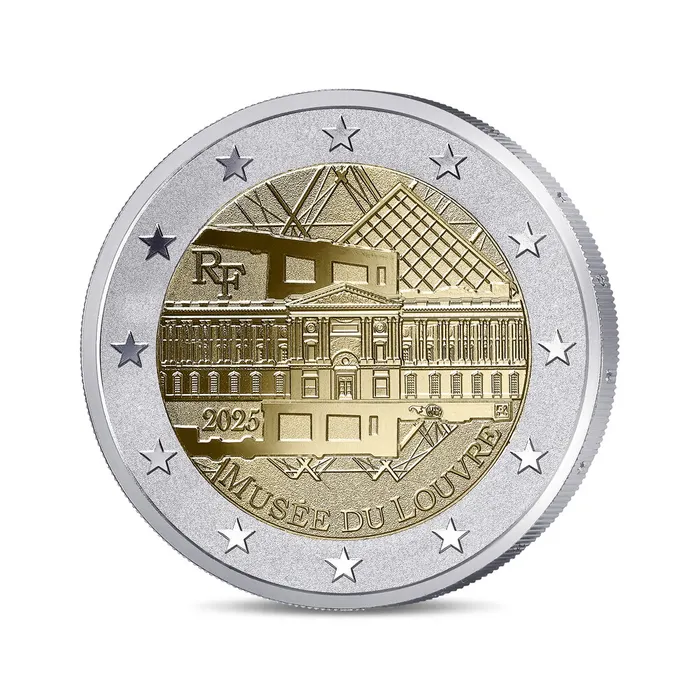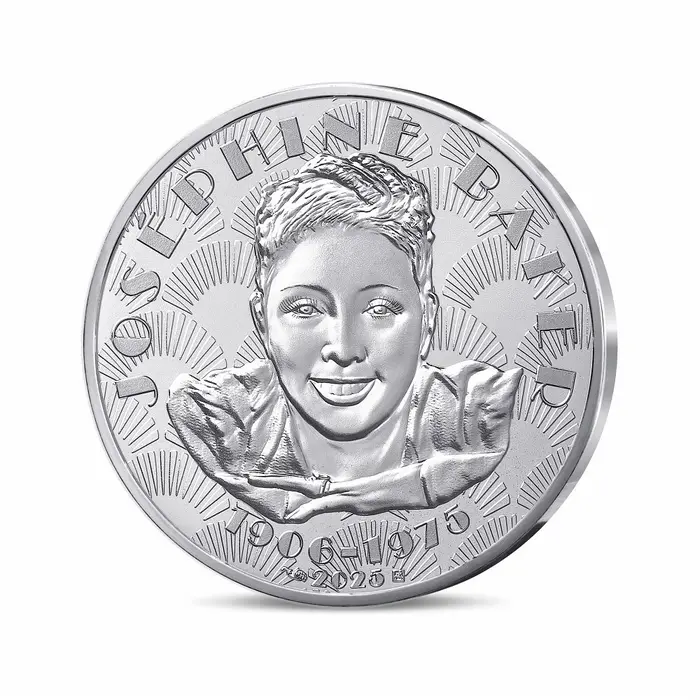



Last year was an eventful year for the Monnaie de Paris. Amongst preparations for the Olympic and Paralympic Games in Paris were the medals produced by the French Mint, three new circulating euro coin designs were issued and commemorative coins were created for two historical events in 2024, the 80th anniversary of D-Day in Normandy in June and the re-opening of the Notre Dame Cathedral in December.
Coin & Mint News™ spoke to the CEO of Monnaie de Paris, Marc Schwartz, at the recent World Money Fair in Berlin to discuss the Mint’s busy but successful year and its plans for 2025.
The 80th anniversary of what is commonly known as ‘D-Day’ – the largest amphibious assault in history that took place on five Normandy beaches in northern France and which has been noted key to the eventual liberation of Western Europe during the Second World War – was highlighted as a particularly important event in the Mint’s calendar. It produced several coins to mark the occasion, dedicating one of each of the four coins minted to the four Allied nations who landed on the beaches of Normandy, with Monnaie de Paris staff present at commemorations in Vierville-sur-Mer, Normandy.
The Paris Games were a less sombre highlight of 2024, as a once in a century event – given that the sporting event had last been held in France’s capital in 1924. Preparations for the event, including the production of the aforementioned several-thousand medals, began in 2021. Each of the 5,084 medals – unique to the 2025 Paris Games – featured an original part of the Eiffel Tower, with an 1889 iron hexagon that was once part of the iconic landmark placed in the centre of the medal.
One of the most significant cultural events in France last year, described as a ‘moving end of year’ celebration, was the official reopening of the Notre Dame Cathedral following a devastating fire that destroyed or damaged much of the building in 2019. The Mint celebrated the occasion with the release of the Excellence à la Française (French Excellence) Notre Dame collection, which was described as an ‘instant hit’.
The collection includes a 1kg gold coin with a nominal value of €5,000. Paying tribute to the Gothic style of the cathedral, the coin is shaped as an arch, mirroring those seen within the Notre Dame. Eugène Viollet-le-Duc’s reconstructed spire forms the division at the top of the bay design on the obverse, with the new statue of the rooster created during the reconstruction work at its peak.
To pay homage to the flamboyance of Notre-Dame’s rose windows, a gold insert enamelled in high fire has been inserted at the top of the coin, reminiscent of its iridescent light radiates over the cathedral and into the field of the coin below. The face value of the coin is inscribed in the façade of the cathedral, as is the year commemorating the reopening of Notre Dame to the public.
The reverse depicts the interior of the cathedral, with its wooden framework below the vaulted ceiling – revealing a complex interlocking of trusses, triangular wooden structures supporting the cathedral roof.
A solid oak case, decorated with a reproduction of the West rose window, encases the coin. The two doors of the case open cathedral style to reveal a reproduction of a section of the aforementioned interior wooden framework, which has been created from the same wood used by the craftsmen on the restoration site.
Last year was a record year for the Monnie de Paris. Turnover of €193.9 million was recorded in 2024, an increase of 20% compared to the previous year. This level of activity represents the highest turnover since the creation of the Mint as a public establishment in 2007, exceeding the previous record in 2023. Production also increased, up by 23% compared to the previous year, with 1.6 billion circulation coins produced in its Pessac plant.
The vast majority of these (1.1 billion coins) were destined for international use, marking a 33% compared to 2023. Export f igures were good across the board, with a record export turnover of €41.3 million showing a 58% compared to the average for 2019 to 2023 results.
Record turnover was also recorded for collector’s coins, at €81.7 million (up 24% compared to 2023), with a 47% increase in net income for the Mint in general (+€6.4 million).
The Mint’s strategy for its production, new releases, and organisation – part of its wider ‘Ambition 2027’ plan (see below) – was described as ‘very successful’ for both collector coins and exports.
‘A sporting year, a year of history, 2024 will remain an extraordinary year for us’, wrote Marc Schwartz during the Mint’s summary of last year’s achievements. ‘The excellent results we are presenting are the result of a transformation carried out over several years and the commitment of all the teams, at all times.’
The Monnaie de Paris’ historic Quai de Conti site in Paris, which includes numismatic museum Musée du Conti, continues to attract a growing audience – totalling 170,000 visitors in 2024 (an increase of 5% compared to 2023, and 31% compared to 2019).
Despite ever-growing visits to the site, which was inaugurated in 1775 and celebrates its 250th anniversary this year, Marc highlighted that it was important to both keep and renew public interest in the Mint and its releases. This is particularly crucial given the emphasis last year on the Paris Games.
To that end, several collections have been planned, or already released, to commemorate notable figures, historic sites, and even automobiles.
The first, and arguably most well-known, of these is France’s first circulating commemorative €2 coin this year paying tribute to the Louvre Museum. The coin release has proved popular, with the proof version selling out quickly and the commercial launch last week accompanied by a long queue of collectors eager to obtain one of these commemoratives.
The Louvre collection highlights the eponymous museum’s ‘global cultural significance and its status as a major art collection’, says the Mint. It follows the ‘Museum Masterpieces’ coins released earlier this year featuring two Rembrandt portraits jointly acquired by the Louvre Museum and the Rijksmuseum in 2016.
Seven variations of the circulating commemorative – three proof finishes (two €2 coins in classic and reverse proof, and a €20 coin) and four coincards – have been produced. The coincards feature one of four artworks in the Louvre’s collections, including Amour et Psyché, the Venus de Milo, the Victoire de Samothrace, and the Mona Lisa. euro – and French astronaut and aviator Thomas Pesquet.
The obverse of the coin depicts Perrault’s Colonnade, the Eastern façade of the Louvre building overlooking the church of Saint-Germain-l’Auxerrois. This exterior façade has been inserted within an image of the museum’s layout, with the Louvre pyramid depicted in the background.
The reverse of the €2 circulating coin, in addition to the standard proof and reverse releases, features the standard map of Europe designed by Luc Luycx. The reverse design of the super proof €20 coins shows the face value in the centre surrounded by a branch of oak and laurel each, emblematic of the euro symbol.
Another recent noteworthy release is the Joséphine Baker collection, created by the Mint to mark the 50th anniversary of her death and pay tribute to the iconic singer and influential campaigner. The new collection was recently unveiled to mark International Women’s Day, and follows her appearance on France’s new 20 cent circulating coins, which entered circulation last year.
It includes two free-strike collector coins, a minting technique similar to that produced on older hammer struck coins. Free striking produces irregular relief and diameter coins, due to the way the metal is moved when struck, with the unique shape intended to represent Baker’s career.
Two commemorative silver €10 and €100 coins accompanied by a cardlet also feature in the collection.
The obverse of the coins depict her most famous portrait in centre, surrounded by an art deco style design typical of the 1920s. Also known as the Roaring Twenties, Baker’s position as an iconic performer was cemented during this period.
The reverse of the standard strike coins features the same commemorative design present on the €20 Louvre coin. The freestrike collector coins depict several roles held by Baker, including as an adoptive mother, humanist, Resistance fighter, and stage performer. A famous quotation from Joséphine Baker surrounds the depictions of the different facets of her life, ‘I have learned never to underestimate a woman’s strength and resilience’.
‘Designing this collection has been a real honour and a great responsibility for me’, said Joaquin Jimenez, Chief Engraver at Monnaie de Paris. ‘I wanted to capture not only her beauty and humanity but also the strength of her character and the breadth of her commitment. Whether it is the daring artist of the Roaring Twenties or the courageous resistance fighter during the Second World War, this collection reflects a facet of her exceptional heritage.’
A slightly different icon – less human and more metal – of France is the Citroën DS, a car manufactured between 1955 and 1975 with almost 1.5 million cars produced in Paris during the period. The DS is notable for its use by several French presidents – including, most famously, Charles de Gaulle. To mark 70 years since its launch, the Mint has created a new coin collection in collaboration with the automobile manufacturer.
The obverse of the first issue features the 1975 DS at the top with its pivoting headlights highlighted in selective gold colouring, illuminating the original 1955 DS 19 below. The reverse of the coin depicts the same commemorative design present on the Louvre and Joséphine Baker coins.
Scheduled for release later this year, the total DS collection will comprise two silver and one gold coin, in addition to a special DS miniset.
Additional collector releases include commemorative €10 and €50 coins celebrating the 50th anniversary of the arrival of the Tour de France on the Champs-Élysées, a collection commemorating the end of the Second World War and VE Day on 8 May, and another paying tribute to the DC Comics universe. The Mint has also planned coins paying homage to Former French Finance Minister Jacques Delors on the 100th anniversary of his birth – who was instrumental to the launch of the euro – and French astronaut and aviator Thomas Pesquet.
In 2023, Monnaie de Paris embarked on a new strategic plan titled ‘Ambition 2027’. The plan contains four separate strategy pillars with objectives to be achieved by the end of 2027. The aim of the objectives is to set clear goals for the Mint, understood by all at the organisation, and intends to complete the transformation of its economic model towards sustainable and profitable growth.
The first pillar concerns business development, aiming for the Mint to achieve €200 million in turnover by 2027. This includes development of activities and business in all areas, including collector and circulating coins, and culture. The Mint is also considering entering the bullion market.
The second pillar aims to provide best practice and quality customer service, with a target of 90% on-time deliveries in 2025, increasing to 95% in 2027.
The third pillar targets acceleration of the Mint’s ecological transition, aiming to reduce its greenhouse gas emissions by 50% by 2030. This objective aligns with the commitments of the Paris Agreements, with Marc underlining the importance of achieving these international goals and utilising maximum effort to contribute to the ecological transition.
The fourth pillar looks to ensure that the Mint is a great place to work, with achievement of the ‘Top Employer’ label, which recognises employers who create optimal conditions for the development of their employees, as a goal.
Money as a general concept is becoming less material as time goes on, said Marc, with the vast majority of euro currency in circulation held within bank accounts, with payments made electronically through mechanisms such as Wero, Venmo, and Paypal. These systems do all, however, require, money in the account – ie. it is not tokenised.
He was firm in noting that crypto assets should not be considered as money, as they are assets (one might argue that the clue is in the name). However, the growth of crypto and tokenised currency opens the door for a new form of currency conflict between private and public money.
The Mint has a responsibility to investigate new technologies and digital issues, he continued. There is a need to master digital technologies to ensure that it remains innovative and keeps pace with future developments.
With that in mind, in 2023, the Mint issued the world’s first coin containing a digital chip paying tribute to the 100th anniversary of Gustave Eiffel’s death. The NFC chip provides access to a digital certificate, with owners able to register it on the blockchain, thus creating a tokenised object. Monnaie de Paris followed this with a second coin featuring the same technology, this time as part of the recent Notre Dame collection.
The Mint has also previously collaborated with artist Robert Alice on a project that explored conceptual and philosophical topics related to blockchain. Lightboxes and prints were presented besides NFT exhibition artwork, with the former acting as physical twins of the digital works. The second stage of this project has recently been launched at the Mint’s Museum, with a new set of works titled ‘Stasis Fields’ exhibited.
These collaborations highlight the co-existence of the physical and digital, with both acting as two sides of the same coin (pun intended!). Despite these digital developments, Marc was keen to note that cash will not disappear. Although it may be used less in transactions, its importance as a store of value remains high. Cash in circulation is approximately triple the figure it was nearly 20 years ago, in 2007.
Particular emphasis has been placed on the Monnaie de Paris as an organisation that ‘has a soul’, with its personnel at the centre of its work. The Mint’s raison d’être – ‘we share yesterday’s currencies, we create today’s coins, we invent tomorrow’s ‘monnaie’ – exemplifies a dedication to marry not just the past and present but also underlines its commitment to the future.